T3 – TRANSIT TALKS WITH TONY
Safer By Design – Crime Prevention Through Environmental Design (CPTED)
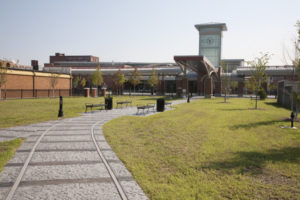
Crime Prevention Through Environmental Design (CPTED) is based on the principle that proper design and effective use of buildings and public spaces can lead to a reduction
in the fear and incidence of crime, and an improvement in the quality of life. Wendel’s Architects are mindful to engage planners, landscape and interior designers, and your community stakeholders to create built environments that foster a climate of safety around your project right from the start. CPTED’s goal is to prevent crime by designing a physical environment that positively influences human behavior.
For the Full Blog, CLICK HERE
Bus Rapid Transit (BRT) – Making Station Design Count
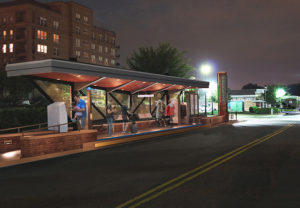
In a BRT corridor, the functionality of the system is significantly affected by the station design. A successful BRT project blends together the vehicles, system and station design to achieve an elevated transportation experience – a premier service.
Station design is a defining element for a BRT system because it, along with the BRT vehicles establish the identity of the service. Station design should be considered an investment that will pay dividends in terms of program identity, rider loyalty, comfort, convenience, and safety.
For the Full Blog, CLICK HERE
Previous Blog Posts
What you need to know about WELL Building Standards
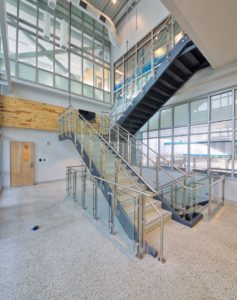
At Wendel we embrace the idea that buildings should be developed with people’s health and wellness as a key consideration at the center of our transit facility designs. This requires taking a holistic approach to health in the built environment addressing behavior, operations and design.
Key to this approach is harnessing the built environment to support human health, well-being and comfort by marrying the best practices in design and construction with evidence-based health and wellness interventions. Mindfully designed spaces and developments lead to places that help improve the nutrition, fitness, mood, sleep, comfort and performance of their occupants. This is achieved in part by implementing strategies, programs and technologies designed to encourage healthy, more active lifestyles and reducing occupant exposure to harmful chemicals and pollutants.
Many factors of the physical environment have a significant impact on day-to-day health and productivity, but it is often the interactions between multiple environmental factors that matter most. Wendel Architect Jeana Stright is WELL-certified by the International WELL Building Institute (IWBI). For a decade she has been collaborating with our clients as an integral part of the Wendel design teams and she brings the expertise to reinforce Wendel’s commitment to advancing human health and wellness in the buildings and communities of our clients.
What is the Well Building Standard®?
It is a performance-based system for measuring, certifying, and monitoring features of the built environment that impact human health and well-being, through air, water, nourishment, light, fitness, comfort and mind.
Grounded in a body of medical research that explores the connection between the building and the occupants – each feature of the WELL Building Standard is ascribed to the human body systems that are intended to benefit from its implementation. While there are different ways to group the various body systems; impacts are considered for the Cardiovascular, Digestive, Endocrine, Immune, Integumentary, Muscular, Nervous, Reproductive, Respiratory, Skeletal, and Urinary systems.
I know that sounds like a lot to ponder but our clients can spend as much one half of their waking hours working in the buildings we design. Because of that fact it adds value to understand those impacts as we seek to design spaces that improve the nutrition, fitness, mood, sleep patterns and performance of our clients.
The Federal Transit Administration (FTA) may allow the reasonable use of grant funding to incorporate fitness centers in facilities but it is easier than you might think to incorporate WELL Building principles into your design without increasing costs. It can be as simple as locating the stairs close to the main entrance to encourage exercise instead of taking the elevator or providing 10” diameter plates in breakrooms and lunchrooms to encourage smaller portion sizes. These small steps can make difference in the health of employees.
To learn more about the International WELL Standard® or becoming a WELL Accredited Professional visit the International Well Building Institute.
Written by:
Tony Kellen
tkellen@wendelcompanies.com
How Immersion™ Saves You Time, Money and Provide You the Best Solution
While other firms may perform similar work tasks, Wendel does it in an entirely unique way, which gets your project off to a quick and efficient start and sustains momentum for the remainder of the work effort.
The purpose of our Immersion™ Process is to gain a first-hand understanding of your needs for a new, expanded. or remodeled facility – physical, functional and operational – and to identify the vision, goals and necessary outcomes for your project.
Click below for a short animation highlighting how the Wendel Immersion™ Process can save you time and money on your next facility project:
Health, Wellness, and the Office Environment in a COVID-19 World
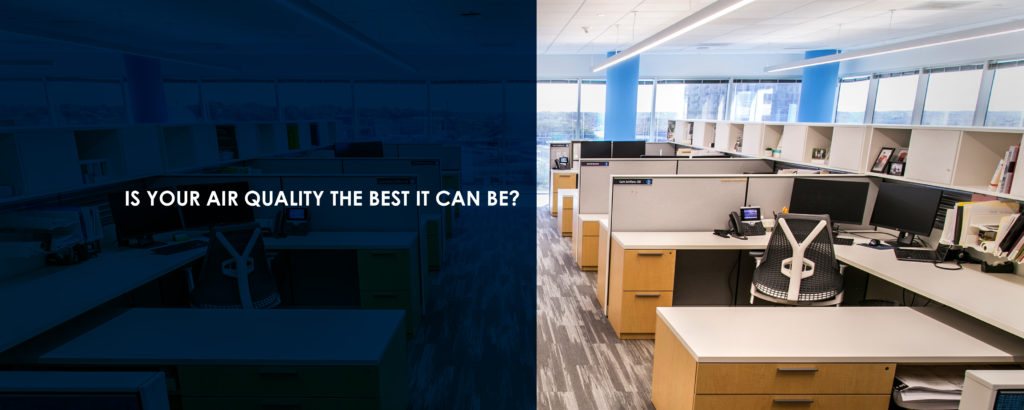
Tired of working from home? Or is the home office your dream come true? As the pandemic eases, many transit agency employees are transitioning back to the office, whether it be on a limited basis or back to 100% of the time.
How the office is viewed is changing, but the office as we know it isn’t likely going away. To continue serving internal and external clients for the long term, transit agencies need to be developing new talent. Whether you are new to the industry or a mentor, you understand the value of face-to-face discussions with colleagues, stakeholders, and clients. It’s easy to collaborate virtually with people you know, but is it realistic to forge new relationships in a virtual world long-term?
Ultimately, offices will always be part of successfully supporting the delivery of transit services to communities. You need your call center, dispatch, training room, driver rooms, operations and maintenance support areas; all are essential. Most want to go to the office to interact, to socialize, to collaborate, to innovate, to learn, and to be part of the work family. This can be critical not only to work performance but also emotional and mental well-being for most individuals.
Many personnel deemed essential: operators, dispatch, drivers, mechanics, and service personnel stayed in the workplace provided with new health and safety protocols. Those essential workers and those now just being asked to return are rightfully concerned, asking: “what have you changed and what are you doing to keep us safe?” This is the dilemma for many: (whether the agency is the building owner or a tenant is) how much more will need to change? Are we ready for all our employees to be back in the office? Who should return to the workplace and when? How can we further protect our employees in the workplace?
Many sensible steps or strategies to promote employee safety, health and well-being are already being implemented. Many like addressing office density, physical separation, workplace flow, signage, elevator use, furniture choices, office hygiene, touch free technology, surfaces, and finishes offer common sense approaches. With an airborne virus like COVID-19 however, and in consideration of future pandemics, transit agencies may need to do more – especially in the area of indoor air quality.
Wendel helps clients design their work environments with our full-service team of mechanical engineers, air quality specialists, energy engineers, architects, interior designers, and construction management professionals. Our strategy for indoor air quality comes in 3 steps: Assess, Plan and Act. Reactions to the impacts to the workplace are changing regularly and whether you need help sorting through the many sensible steps or strategies mentioned, or you want to explore more technical solutions for indoor air quality, Wendel can help. We recognize that there simply is no single solution for every transit agency. The solutions will be varied by organization and facility.
In the end, the solutions you embrace should address a variety of elements, notwithstanding your company culture toward productivity and overall employee emotional wellbeing. Ideally, the decisions you make for the future are sensible for employee safety, health, and wellness and part of your healthier “new normal.”
Written by:
Tony Kellen
tkellen@wendelcompanies.com
The Benefits of Integrating Design and Construction
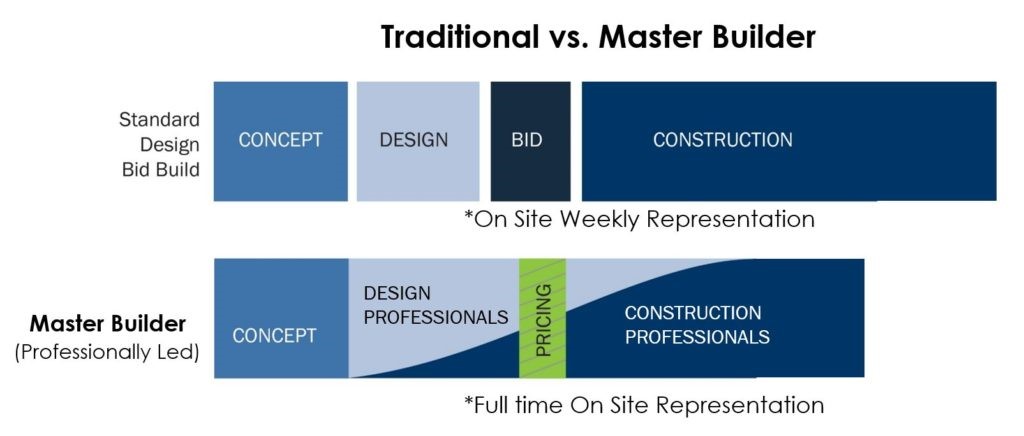
Are you tired of playing mediator between design firm and contractor? For many transit agencies assembling a team of designers and constructors to complete a facility project can be daunting. The inexperienced procurement officer may not know where to begin, and the experienced likely has memories of the frustration of managing separate competing design and construction interests. Even when things are running smoothly this means dealing with multiple points of contact, spending time on the phone and sifting through emails. However, the real headaches begin when the project reaches a challenge. When different teams working on a project do not agree on how to move forward, it’s left to the owner to step in like a referee and attempt to resolve the issue and manage change orders. This is as unproductive as it is unpleasant and forces the transit agency out of their preferred role; monitoring the project’s triple constraint of scope, schedule and budget.
Recognizing this challenge in the traditional design-bid-build process, Wendel can offer a better solution to our clients. Master Builder is the result, and it addresses the main challenges to project delivery for both our public and private clients. In the place of separate design and construction teams, a Master Builder led project utilizes Wendel’s in-house design and construction competencies, all under one roof. An example of this model was the design and construction of St. Cloud Metro Bus’s compressed natural gas fueling station and major facility upgrades with Wendel as trusted adviser for both the architectural/engineering design and construction management, Wendel provided a seamless, single point of contact and responsibility over the course of the $7.2M project.
In this professionally led delivery model, Wendel as trusted adviser works closely with the transit agency keeping them apprised of progress in each step from pre-design through competitive bidding of contracts through construction and close-out. This streamlined form of communication and project leadership increases project efficiency and creates a relationship of trust between the transit agency and the Master Builder and is key to a smooth project experience.
Streamlined communication is just one of the ways Wendel’s Master Builder process improves on traditional project delivery models. In traditional models, construction personnel and contractors are brought in after the design process to execute the construction. A Master Builder project brings design and construction personnel into the design process with the owner from the very beginning. This is incredibly valuable as soliciting feedback on constructability, schedule and budget during the design process results in a positive impact on the project’s efficiency and overall cost.
The ultimate goal of Wendel’s Master Builder process is to provide a more client-centric approach to projects. Seamless communication and holistic, one-stop-shop services are a part of that. Another critical aspect for the transit agency is the open-book, transparent approach that Wendel takes to project cost management and control. We openly share our project accounting every step of the way allowing the transit agency total control and then return all unused contingency funds at project completion. This ensures accountability for the Master Builder, as well as greater cost control; not something typically found in a traditional design-bid-build process.
When put into practice, projects led by Wendel’s Master Builder process are higher performing, more collaborative and present less cost and fewer risks. The added value achieved through transparency and partnership has proven to be a game-changer for many of our clients. As you look to execute your next facility project why not consider hiring a Master Builder?
Written by:
Tony Kellen
tkellen@wendelcompanies.com
Durable and Sustainable Transit Facilities of the Future
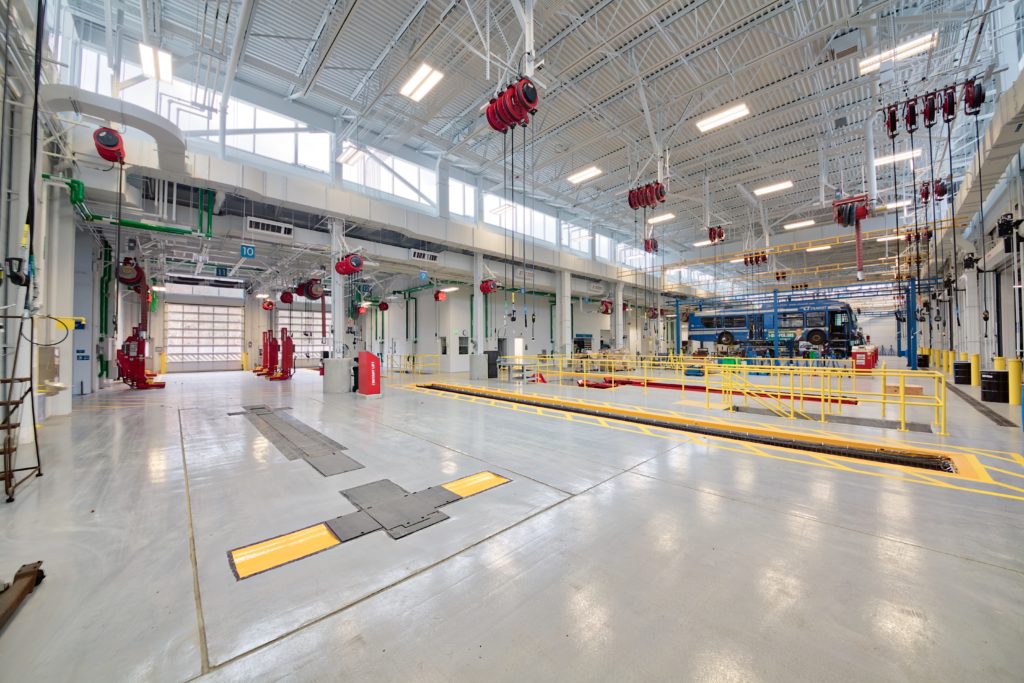
Durability, efficiency and functionality are core to facility design, making them potential showcases of sustainability and resiliency in a time when transit is an increasingly key player in emergency response around the country. A key component to a successful project is having discussions with Transit stakeholder groups on sustainability and the impacts on long term operations and services provided to the public. Wendel’s experienced transit architects guide agencies through planning scenarios and how to integrate sustainable principles into design.
Aspiring to higher environmental performance can lead to long term operational efficiencies and improved occupant well-being. Tradeoffs need to be considered and many strategies should be investigated to drive potential savings. Energy modeling can be used to compare various building types and systems. Simple design moves such as; evaluating building orientation for maximized daylighting/shading; reducing the size of HVAC loads for solar heat gain in cold climates; and cooling loads in hot climates and leveraging cross ventilation opportunities through perpendicular orientation to prevailing winds are all no cost/high benefit opportunities to reduce a facility’s overall EUI (Energy Use Intensity).
Highly efficient mechanical systems and energy management/advanced control systems can monitor and regulate building operational efficiency. Incorporating radiant floor slab heating systems in bus maintenance and storage facilities helps with the added challenge of constantly opening and closing overhead bus entry/exit doors, creating inconsistent temperature that is inefficient to control. Radiant floor slab heating systems keep the heat source near the floor where work/tasks are being performed rather than heating voluminous spaces.
Building materials should be considered for durability, environmental and health benefits. Product certifications help designers choose better products on the market that are third party certified for their sustainable attributes. Many of these products also meet recycled content and regional goals without an added cost to projects.
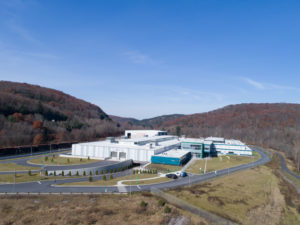
In the outdoor environment Wendel has utilized green roofs on projects to create additional space for landscaping and help to reduce and filter stormwater. Managing stormwater at sites can be even more important depending on the proximity to other sensitive areas such as nearby lakes and streams. Water that falls on the roof and other hard surfaces can also be directed to bio-retention planted areas where it can be filtered by a series of plants, soil and gravel. Storm water collection from these enormous roofs can be designed to offset water use in bus wash systems, irrigation, and offsetting potable water use for fixtures.
More cost sensitive options such as solar panels or geothermal wells that use the earth’s stable temperatures to extract or discharge heat to efficiently warm and cool buildings can be examined. There are many financial models to help offset the costs of these systems, including developer owned and operated power purchase agreements and opportunities for the transit agency to sell the renewable energy credits on the open market.
Wendel’s portfolio of facilities showcase a variety of sustainability features. Good examples are the LEED Platinum Greater Lynchburg Transit Company (GLTC) Kemper Street Transer Facility and the High Performance Building (LEED Gold Equivalent) Waterbury, CT Bus Operations and Maintenance Facility. Our projects demonstrate our understanding of the efficiencies, costs and challenges of various sustainability strategies in differing environments; promoting even more innovation for new designs as our architects create buildings that consume less energy and utilize the most advanced methods that sustainable technology can offer.
Simply put, sustainability creates long-term value and ideal green building projects promote occupant health by using renewable, natural materials, sourcing some of their own energy and functioning without having an adverse effect on the environment, and that is good for everyone.
Written by:
Tony Kellen
tkellen@wendelcompanies.com
Exploring Solar-Plus-Storage for Battery Electric Buses
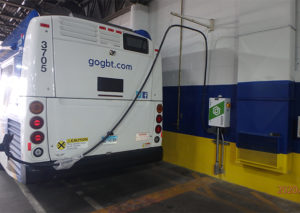 As transit systems add battery electric buses (BEB) to the fleet mix, managing the costs to power them can be a challenge. A major factor for grantees to consider is higher electricity costs due to time of use or demand charges incurred when charging profiles create spikes in demand from the utility grid. Excess pricing structures effectively exist to serve a single purpose: de-incentivize customers from overtaxing the grid with excessive energy demand during high energy usage periods. Building out new power infrastructure and electrical equipment to support charging can add significantly to the cost of deploying large numbers of BEBs.
As transit systems add battery electric buses (BEB) to the fleet mix, managing the costs to power them can be a challenge. A major factor for grantees to consider is higher electricity costs due to time of use or demand charges incurred when charging profiles create spikes in demand from the utility grid. Excess pricing structures effectively exist to serve a single purpose: de-incentivize customers from overtaxing the grid with excessive energy demand during high energy usage periods. Building out new power infrastructure and electrical equipment to support charging can add significantly to the cost of deploying large numbers of BEBs.
At Wendel, we have been working with clients to update their facilities to accommodate BEBs. For example, with Greater Bridgeport Transit (GBT), Connecticut DOT (CTDOT) and operator CT Transit, John Havrilla, Director of Alternate Fuels for Wendel, has seen first-hand the reality that transit facilities were not originally designed to handle the additional electrical load. With upgrades, there are many factors to consider and every transit system will have differing scenarios to navigate. Effectively managing (smart charging) the overall demand (kW) cost of BEB charging is one of the biggest obstacles faced in the BEB electrification journey. This is where Wendel has provided expert technical assistance for BEB Projects.
Even with small numbers of BEBs, transit agencies can be faced with increased costs on current utility tariff pricing; despite typically lower electrical rates for overnight charging. Thinking long term, assessing new power generation in current and new facility design should be explored as a part of the charging mix; and operators of BEBs can look to one of their natural allies in the fight to reduce greenhouse gas emissions: solar energy. With solar-powered charging setups, transit fleets may be able to reduce their dependence on the grid, cut energy costs, and in some cases mitigate portions of the expensive upgrades to utility infrastructure. What’s more, fueling BEBs with a renewable energy source like solar further reduces emissions compared to diesel and even CNG. Agencies with large indoor storage have facilities that may be conducive to solar arrays on the roof. For transit agencies not interested in owning and operating solar facilities, third party companies are available that will build, own, operate and maintain these systems at little or no up-front costs to the transit system.
Solar-plus-storage systems are more economical where heavy costs are being projected under higher time of use or demand charge rates. Solar panels only generate energy when the sun is shining, that’s why the ability to store solar energy for later use is so important. This too can be challenging if space for large battery pack storage on a transit site is a limiting factor. To charge 5 buses, a 4 hour, 739.5 kW battery pack is roughly 24 ft wide by 5 ft deep by 8 ft high.
From 2008 to 2017, the United States was the leader in lithium-ion battery storage with about 92% of it, or about 844 megawatt hours (MWh) of the 1,000 MWh of storage in the world. You can learn more of the basics here: Energy.Gov Solar-plus-Storage Systems. With BEBs continuing to claim a larger share of the U.S. transit fleet, examining the possibility of a solar-plus-storage microgrid is worthy of consideration as one more potential strategy in managing overall BEB charging costs.
Written by:
Tony Kellen
tkellen@wendelcompanies.com
Integrating TOD into your Intermodal Design
As transit agencies look to promote transit use – communities are embracing the vision of intermodal connectivity – inclusive, walkable, affordable, environmentally sustainable urban designs.
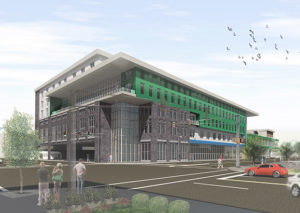
On Wendel’s intermodal projects; planning for transit-oriented development (TOD) is increasingly becoming an essential component of successful transit centers. A good TOD example is the Central Midlands Council of Governments (CMCOG) study to determine the feasibility of constructing a regional intermodal center in downtown Columbia, SC for the COMET – Central Midlands Transit. Where most consider the “D” in “TOD” to mean “Development,” in reality it is more about “Density.” Embracing TOD is critical in extending the land use and transportation nexus.
Last month my blog highlighted the fact that social distancing to slow down this pandemic runs counter to the mission of public transportation. In the thick of this disruption, with teleworking and social distancing in fashion, it is convenient to argue urban density as a cause for more disease and tragedy.
At the same time, this on-going COVID-19 crisis is amplifying our nation’s view towards the purpose of transit. As ridership has plummeted amid the coronavirus pandemic, the goal of transit has shifted to an essential service focus. Despite reduced services and lower passenger counts, all over America transit’s workers have been saluted for keeping other essential workers moving and highlighting the fact that transit is, at the core, a critical part of the equation that allows our economy to thrive.
When this crisis passes, renewal of urban centers will likely continue the trend where proximity and adjacency to transit centers in the urban core become even more meaningful to the future of thriving cities. Consider the following about Millennials; “Their adroitness at using technology and their predisposition for living in urban neighborhoods and taking a train or bus to get around is already influencing trends in the transportation field. SOURCE: APTA/TCRP Report Understanding the Millennial Mindset. The truth is the next generations are going to be increasingly multimodal, choosing the best transportation mode (driving, transit, bike, or walk) based on the trip they are planning to take.
As I wrote last month – the crisis will encourage leaders and developers to build more healthy, self-sufficient, and compact urban environments. Humanity thrives on social interaction and relationships. For many, the isolation and loneliness brought about by the current lockdown highlights the need for mixed-use, connected, and “livable” neighborhoods where people can easily walk, cycle, and move about and easily access the spaces, goods, and services that meet daily needs.
So, while Urban Planners, Architects and Engineers will certainly take a fresh look at how we address our nation’s transit facilities, I foresee continued growth and urban development in the next few decades, focusing downtowns as anchors for cultural and social activity and commercial investment. The need for TOD’s will continue to grow. Officials won’t likely abandon visions for walkable, bikeable, thriving communities with more public transportation, and vibrant parks and public spaces. In the future it is my hope that we will look back on these uncertain times and see that the benefits of urban density still far outweigh any unintended consequences.
Written by:
Tony Kellen
tkellen@wendelcompanies.com
Coronavirus – The New Disruption
2013 Nobel Prize Winner and Yale economics professor Robert Shiller says: “disruptions like the Great Depression can often be traced to a pessimistic idea, like the fear that the economy’s best days are behind us. The spread of Coronavirus is different because it’s real—it is causing people to stay home and avoid going out, which is causing the gears of commerce to stop turning. The Coronavirus’s effect on the US economy is something we haven’t quite seen before.”

Much has been written about disruption. Disruptive technologies have been a catalyst for change – most of which have been viewed by the masses as positive disruption – changing our lives for the better. Coronavirus (COVID-19) is a new disruption, unfamiliar to Baby Boomers, Generation X, Millennials, or Generation Z. What will we learn – and for the future what can those of us involved with Public Transportation do to find positives in the chaos?
With the onset of COVID-19, public transit has entered a new era. Public transit is all about providing excellent service to customers who often deal with time wasted in traffic congestion. For public transit – density, smart use of space and vehicles filled with customers is key to efficient and effective service delivery. With COVID-19 we have exactly the opposite – empty platforms and sparsely populated vehicles. Everything required to slow this pandemic – social distancing – less density – runs counter to the mission of public transportation. For many riders, transit means more than just a daily commute; it’s a lifeline. For them it’s not just social distancing – it’s social isolation.
What does all of this have to do with an Architectural, Engineering, Energy Efficiency and Construction Management firm with nearly 50 years of experience designing transit facilities? It may not immediately resonate with our thinking – but could we as architects and engineers take a fresh look at how we address our nation’s transit facilities? What haven’t we thought about? In light of this pandemic can we rethink access and accommodations for intermodal stations, platforms, operations and maintenance or other facilities to make them healthier public spaces and places to work? To not have that discussion would be a missed opportunity.
Is there more we can do during this critical time of modernizing our infrastructure for public transportation? What extra steps can we take to help transit agencies make sure projects can continue to move forward in the procurement process? If a transit agency is challenged working remotely – could we offer to lend a communication system we use to successfully deliver projects to our clients? Could we offer to host a pre-proposal video meeting or webinar?
These are just some of the questions – and it’s our job to find ways to answer the questions that will likely lead to even more questions. When we get to the other side of this pandemic, and we will, my hope is that we will find many positives from all this chaos. For public transportation, I believe many more will see the positive role that transit plays in the US economy and in the daily lives of so many as we look forward to the day when we can all resume our normal lives.
Written by:
Tony Kellen
tkellen@wendelcompanies.com
